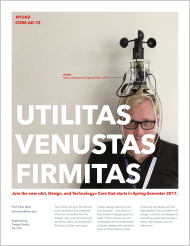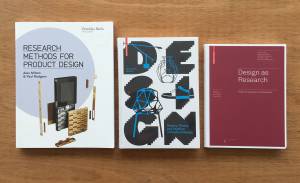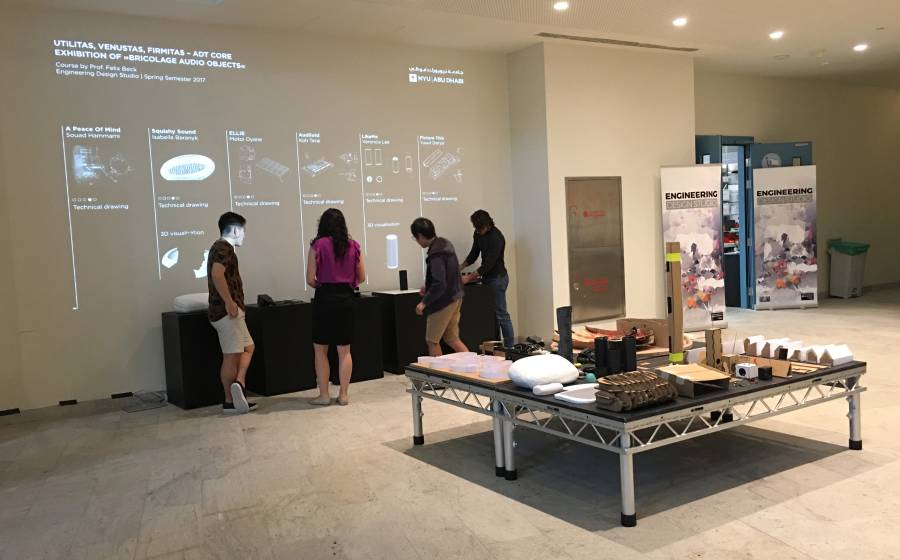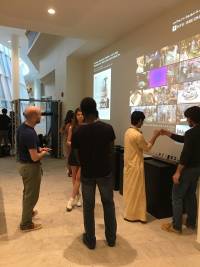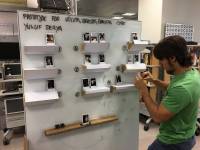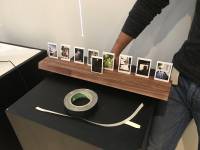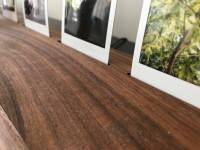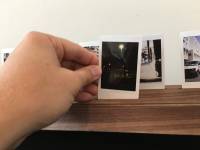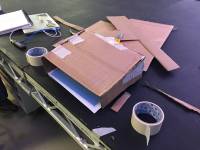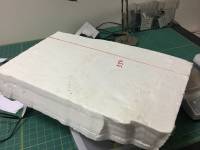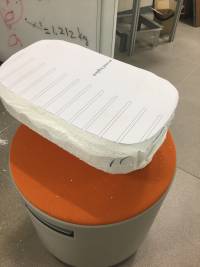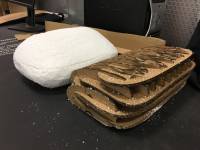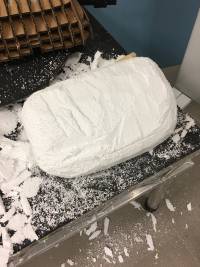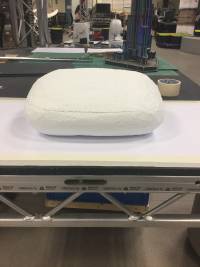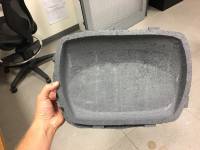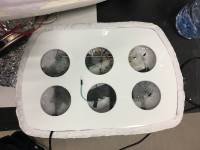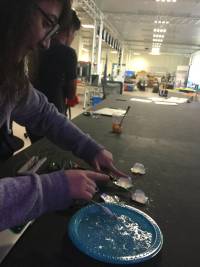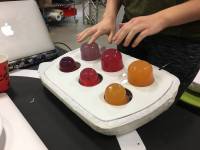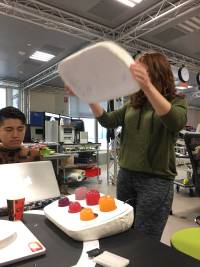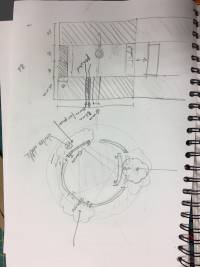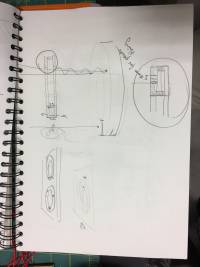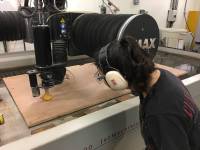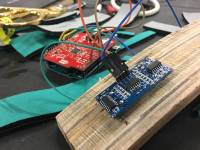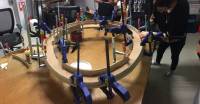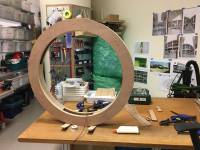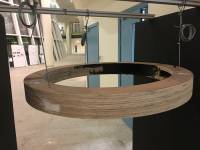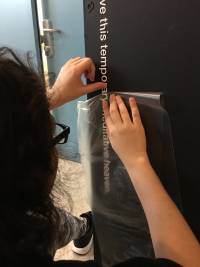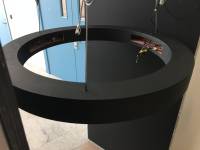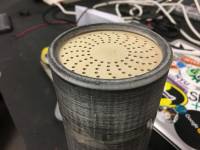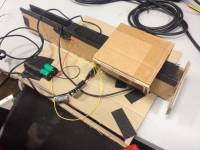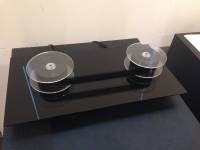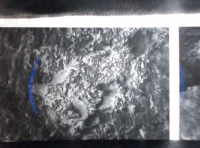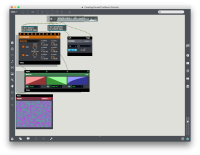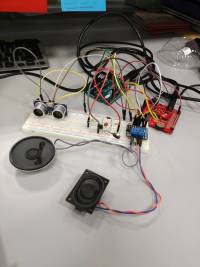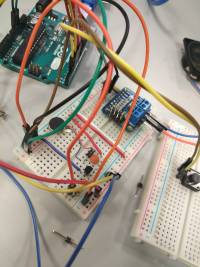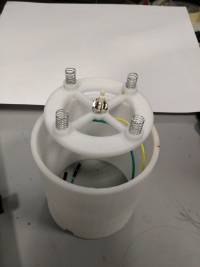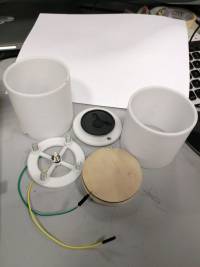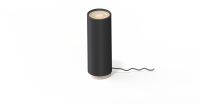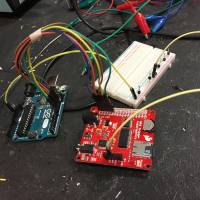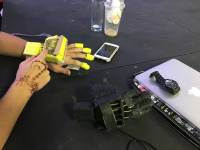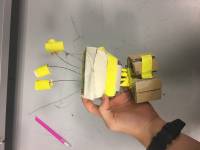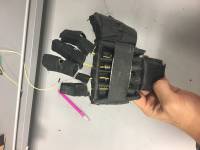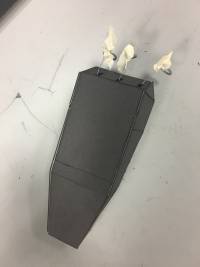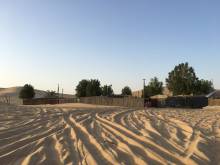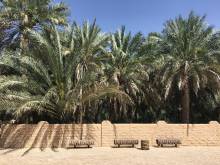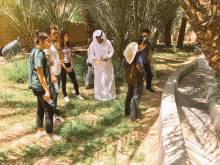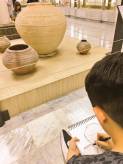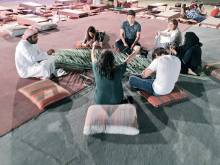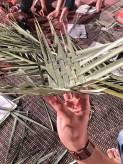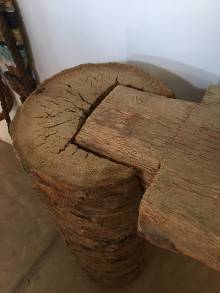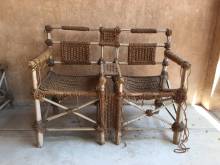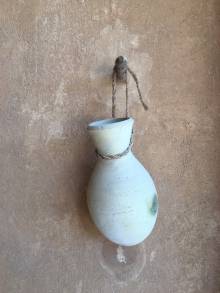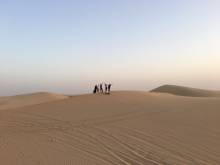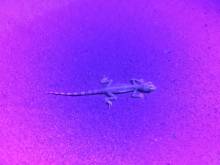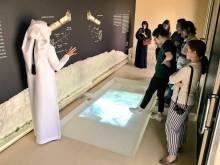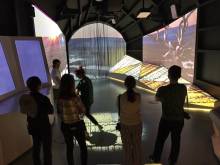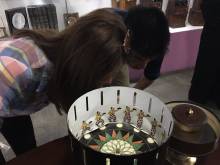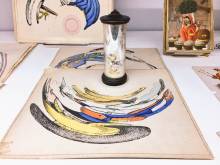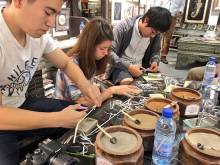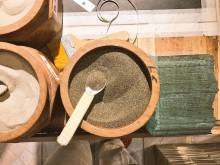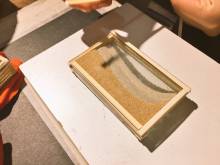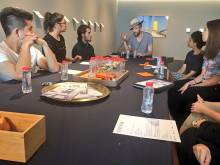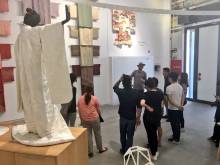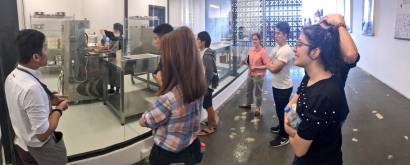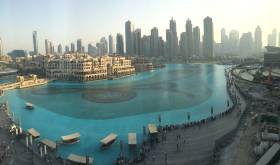Table of Contents
Utilitas, Venustas, Firmitas 2017
| Course Title: | Utilitas, Venustas, Firmitas |
| Course Number: | CORE-AD-72 |
| Course Category: | Art, Design, and Technology (Core Competency Course) |
| Course Credit: | 4.0 points |
| Course Weeks: | 14 weeks |
| Contact Hours/Week: | Day 1, Project Colloquium: 155 min |
| Day 2, Seminar: 75 min | |
| Day 3, Seminar: 75 min | |
| Prerequisite: | There are no prerequisites for this course. |
Find the weekly schedule for Spring Semester 2017 here. Here is the 2017 list of topics for case-study presentations and the overview of Essay 1 presentations. Check out some documentation pictures from course 2017 or course 2016.
Course Description
Design seems to be omnipresent. But what is design and what makes it good or bad?
The course »Utilitas, Venustas, Firmitas 1 « (latin for usage, beauty, and stability) explores how design influences our life, and investigates the fundamentals of “good design“ – how to be innovative, while keeping the design useful, aesthetic, understandable, unobtrusive, honest, long-lasting, detailed and environmentally friendly, and at the same time focusing on essential aspects. Students take a global look at the status quo of the use of design in media, objects and architecture, and observe its influence to art and technology from past to present, dealing with questions concerning ethics and values. Design tools and processes will be highlighted. Based on the fusion of readings, study, discussion and experiences, over the course of the semester students will develop an understanding of how mutually reinforcing and beneficiary a mix of Art, Design and Technology can be. Lecture and discussion will be the breeding ground for concept development of the design of a Bricolage: Every student will realise a <font inherit/inherit;;inherit;;#FFFF00>product prototype of an Audio-Device</font>. The project will be complemented by lectures and case-studies, reading assignments (completed prior to class), class discussions and one-on-one meetings with the instructor. There will be several non-obligatory topic related excursions (weekend trip, evening events, etc.).
This Core Competency course borrowed its title from the roman artist, architect, and engineer Vitruvius who comprised a first handbook of planning and design over 2000 years ago. He described that a structure must exhibit the three qualities of firmitas, utilitas, venustas – that is, it must be solid, useful, beautiful. These are often termed the Vitruvian Triad. Vitruvius also described that beside an interest in art and science a creative student should be also versed in rhetoric and have a good knowledge of history and philosophy. We will follow his rule. Students will leave the course with a completed project to be displayed in an exhibition and a personal philosophy of about Art, Design and Technology.
Place in the NYUAD Curriculum
»Utilitas, Venustas, Firmitas« is a Core Competency Course in the field of Art, Design, and Technology. This course teaches students to think critically and work creatively toward innovations in arts practice, design and engineering, creative writing, data visualisation, programming, and performance. Guest lecturers as much as interdisciplinary co-teaching plays an important role in this course.
This course is a <font inherit/inherit;;inherit;;#FFFF00>very work intensive course</font> that, beside the Core typical fields, also contains several practical elements: as part of a Lab Component students will be introduced to physical computing, electronics, rapid prototyping, model making, etc. Beside the seminar and lab hours, and homework (±1 hr/day) students are asked to work an adequate time on their projects after class (±2 hr/day).
Learning Outcomes
Students in the course will learn to develop critical thinking skills and be trained in concept development. As the project contains practical elements, students will also be trained in using machines like laser-cutter or 3D-printer, and other rapid prototyping tools. At the end of this course, students will:
- Appropriate the ability to apply design in a project oriented way and to improve the quality and performance of future projects.
- Solve problems using the design process (understanding, observing, defining perspective, inventing, visualising, prototyping, developing and testing), and to implement knowledge of the following project phases in future projects: research, brainstorming, idea development, concept development, prototyping.
- Utilise modern digital tools to address design related challenges.
- Improve visualisation methods and presentation skills. Discuss design topics eye-to-eye with other creative professionals.
- Be forced to think about ethical issues in the digital age.
These outcomes will be assessed through reports, class participation, in-class exercises, and project presentation and documentation as described below. The course rubric that will be used as a guideline for grading will be handed out during first week of semester.
Teaching and Learning Methodologies
This course is a mix of theory and practice. Students will be involved in reading, discussion and writing, as well as the completion of a practical project. There are two modes of delivery: 1st. Seminar and 2nd. Project:
This course adopts a SEMINAR format that requires students to participate actively in class discussions. Considerable class time will be spent on presentations and discussions of related art and design projects, and lectures/case-studies on different technological aspects. Hence, students are expected to read and research about a substantial number of projects, participate in classroom and online discussions, and develop a concept for a project. Each student will give two case-study presentations, will write two essays, the first with a draft and re-write, and give a presentation of the project prototype during an exhibition at the end of the semester. Each student is required to do a final PROJECT of a topic of their choosing that goes deeper into issues beyond what was discussed in class. The aim of the project is to develop the concept of a functioning Audio-Device (e.g. a radio, mp3-player, artistic audio object, etc.) that displays the technical and conceptual intellectuality of the student. While the focus in Spring Semester 1 lays on concept development, the focus in Spring Semester 2 lays on the design and development of the working prototype. Weekly presentations and ethical discussions of cases provide the groundwork for students to prepare written case analyses and accompanying oral presentations.
The course makes use of an online site – NYU Classes – that will serve as a repository for required readings, assignments, and additional course materials. Class discussions will be supplemented by multimedia material such as Keynote/Powerpoint slides and video clips.
Required Text Books
- Design: History, Theory and Practice of Product Design, Bürdek, Bernhard E., Birkhäuser, Basel, 2015, 4th edition, ISBN PDF 978-3-0356-0394, ISBN EPUB 978-3-0356-0405-4
- Design as Research – Positions, Arguments, Perspectives, Joost, Breies, Christensen, Conrad, Unteidig (Eds.), Birkhäuser Verlag GmbH, Basel, 2016
- Research Methods for Product Design, Milton, Alex, Paul Rodgers, Laurence King Publishing, London, 2013
Supplemental Materials (available as PDF via NYU Classes):
- The Making of Design, From the First Model to the Final Prototype, Terstiege, Gerrit, Birkhäuser, Basel, 2010, revised reprint, ISBN: 978-3-0346-0089-7
Required Films
- Objectified, 2009
- Helvetica, 2007
As supplemental materials there will be a wide range of online video resources and project documentation. Links will be shared via NYU Classes, mail, and/or during class.
Assessment
Students must complete all assigned coursework in order to pass the course. All required papers and other documents must be submitted electronically. No extensions will be given on assignments or papers without sufficient extenuating circumstances and prior approval from the instructor. Any two missing classes will result in (-) minus point automatically. The course rubric that will be used as a guideline for grading will be handed out during first week of semester.
Marking Scheme:
| I. | Essay 1 and Rewrite | 10% |
| This essay is designed to teach students how to perform a conceptual outline of a project idea. Length: 1200 to 1500 words. | ||
| II. | Essay 2 (Project Idea/Concept Development) | 20% |
| Students will choose their own topic for the final essay. The topic will reflect the student’s project theme, with topic proposals submitted in advance for critique and approval by the instructor in a one-on-one session. The essay should contain additional drawings and/or information graphics to explain and underline the projects idea. Length: 1200 to 1500 words. | ||
| III. | In-Class presentation (case-study presentation) | 10% |
| Students will each give three 15 minute oral presentations during class time: Two on a subject related to the dedicated days theme (assignments will be made at the beginning of the term), a third one on a subject related to the students project essays. | ||
| IV. | Class participation | 10% |
| Students are expected to come to each class fully prepared, having read through or watched the texts or films assigned for the day’s class – and thought about them carefully. Participation will be assessed on the basis of both the regularity and the quality of contributions. Students will be asked to initiate class discussions without prior warning and may be asked to perform this function more than once. | ||
| V. | Project Report | 10% |
| Students are required to submit, electronically, before the midnight preceding each class for which it is assigned, a 300-word project report in which they describe their actual project phase: research, choice of technology, materials, etc. There are six project reports overall in the weeks 7–12. Reports will be assessed on the following basis:+ / ✓/ - | ||
| VI. | Realisation of Final Audio-Device Prototype | 30% |
| Students are required to realise a prototype of an Audio-Device (radio, mp3-player, experimental reactive or interactive object etc.) that is designed to follow a certain functionality. Find example projects displayed in the Engineering Design Studio (A5, 015). | ||
| VII. | Presentation, Documentation and Exhibition | 10% |
| Every student will have to present the working Audio-Device at the semester end in class (semester end presentation) and display it in a semester end exhibition. | ||
| Total | 100% |
General course structure/schedule of meetings/list of discussion topics
Spring Semester 1
| Week 1 | SUN | Design Fundamentals (Introduction and Lab Session) | |
| TUE | Kick-Off Workshop I. (Sketching, Scribbling, Rendering) | ||
| THU | Kick-Off Workshop II. (Project Management, Mood-boards) | ||
| Week 2 | SUN | The Vision of Design (lecture), project colloquium | |
| TUE | Case-study presentations (No. 1, No. 2), class discussion | ||
| THU | Case-study presentations (No. 3, No. 4), class discussion | ||
| Week 3 | SUN | Design & History I. (lecture), project colloquium | |
| TUE | Case-study presentations (No. 5, No. 6), class discussion | ||
| THU | Case-study presentations (No. 7, No. 8), class discussion | ||
| Week 4 | SUN | Design & History II. (lecture), project colloquium | |
| TUE | Case-study presentation (No. 9, No. 10), class discussion | ||
| THU | Case-study presentation (No. 11, No. 12), class discussion | ||
| Week 5 | SUN | Design Thinking (lecture), project colloquium | |
| TUE | Student presentation of Essay 1 (students 1–3), class discussion | ||
| THU | Case-study presentation (No. 13, No. 14), class discussion | ||
| Week 6 | SUN | Design Research (lecture), project colloquium | |
| TUE | Student presentation of Essay 1 (students 4–6), class discussions | ||
| THU | Case-study presentation (No. 15, No. 16), class discussion | ||
| Week 7 | SUN | Rapid Prototyping (lecture), project colloquium | |
| TUE | Student presentation of Essay 1 (students 7–9), class discussion | ||
| THU | Case-study presentation (No. 17, No. 18), class discussion |
Spring Semester 2
| Week 8 | SUN | Design & Methodology (lecture), project colloquium | |
| TUE | Student presentation of Essay 1 (students 10–11), class discussion | ||
| THU | Case-study presentation (No. 19, No. 20), class discussion | ||
| Week 9 | SUN | Graphic Design (lecture), project colloquium | |
| TUE | Student presentation of Essay 1 (students 12–13), class discussion | ||
| THU | Case-study presentation (No. 21, No. 22), class discussion | ||
| Week 10 | SUN | The Function of Design (lecture), project colloquium | |
| TUE | Student presentation of Essay 1 (students 14–15), class discussion | ||
| THU | Case-study presentation (No. 23, No. 24), class discussion | ||
| Week 11 | SUN | Interface Design (lecture), project colloquium | |
| TUE | Case-study presentation (No. 25, No. 26), class discussion | ||
| THU | Prototyping & realisation in the Engineering Design Studio | ||
| Week 12 | SUN | Interaction Design (lecture), project colloquium | |
| TUE | Case-study presentation (No. 27, No. 28), class discussion | ||
| THU | Prototyping & realisation in the Engineering Design Studio | ||
| Week 13 | SUN | Design & Architecture (lecture), project colloquium | |
| TUE | Case-study presentation (No. 29, No. 30), class discussion | ||
| THU | Prototyping & realisation in the Engineering Design Studio | ||
| Week 14 | SUN | Presentation of Essay 2 and demonstration of project (students 1–7) | |
| TUE | Presentation of Essay 2 and demonstration of project (students 8–11) | ||
| THU | Presentation of Essay 2 and demonstration of project (students 12–15) | ||
| Week 15 | SUN | Exhibition |
Case-Study Presentations
Every student will present two case-study presentations to be chosen randomly during class. Topics change every semester.
Appendix
Case-Study Presentation
Every student will present two case-study presentations to be chosen randomly during class. The presentation must follow the class presentation rules, must be submitted as PDF format the day before presentation through NYU Classes, and must contain the following attachment:
Attachment A: max. 15 slides (keynote, powerpoint or google presentation tools) to be presented in class. The student must use the predefined presentation template (to be added! — Felix Beck 2016/11/21 06:25). The file name should follow the same naming standard: casestudy1(2)_YourFirstName_YourLastName.key/.ppt
Essays
Your essays must include an introduction, a body, and a conclusion. (Approximately 3-4 pages each). The essay must be submitted through NYU Classes course page and must contain two attachments:
Attachment B: text document (max of 1200 -1500 words) named according to the following template: essay1(2)_YourFirstName_YourLastName.doc and containing a Header with your complete Name, and Student number
Attachment C: max. 15 slides (keynote or powerpoint) to be presented in class. The file name should follow the same naming standard: essay1(2)_YourFirstName_YourLastName.key/.ppt
Essay 1
Understanding Technologies (approximately 3 pages)
Deadline: end of week 2 (exact date t.b.a.)
Deadline for Rewrite: Sunday Week 4 (exact date t.b.a.)
Choose a recent (max 1 year old) news story in a popular national or international news source concerning novel technology of an audio device. Your assignment is to read the news article and then prepare an analytical in-class presentation that you will give. The presentation should a) summarise the article; b) evaluate the news story from technical, rhetorical and sociological points of view. Please include the merit and shortcomings the story has and the possible impact the topic in the article have on society. You should close your essay with an outlook into the future and c.) ideate new use-cases for this technology.
Your essay should use the format defined by the Modern Language Association: http://www2.ivcc.edu/rambo/eng1001/format.htm
Essay 2
Project Idea/Concept Development of your Bricolage project (approximately 4 pages not incl. images)
Deadline: End of week 11 (exact date t.b.a.)
Describe the concept behind your designed audio object/product; do not describe its technology but its purpose for the mankind. What is the idea behind it? Give your view based on the many discussion in this course and on the reading. Close your essay with an artistic statement.
Your essay should use the format defined by the Modern Language Association: http://www2.ivcc.edu/rambo/eng1001/format.htm
Homework
| Week 1. | Finalise your radio kit (hardware handed out during class), build a cardboard box for it |
| Reading: Research Methods for Product Design (chapter 1 (p. 9–19), p. 176–177 | |
| Week 2. | 1. Develop a Gantt-Chart that reflects the design stages of your project for this semester |
| 2. Idea development: Think about three Audio-Devices you would like to design ⇒ Make three conceptual drawings that visualise your ideas; create a mind map about your field of interest. | |
| 3. Design a Mood-board and a Typo-cloud for your Audio-Device. | |
| Reading: Research Methods for Product Design (p. 56 – mind mapping, p. 66-67, p. 78 – mood boards, p. 82 – product collage) | |
| Week 3. | Write Essay 1 |
| Reading: Research Methods for Product Design (p. 30 (future forecasting), p. 31 (trend spotting), p. 50, p.64–65 (literature reviews)) | |
| Reading: Design as Research, Where are we going? (p. 17–21), The Resourceful Social Expert (p. 22–27), The Myth of the Design Androgyne (p.28–34) | |
| Week 4. | Rewrite Essay 1 |
| Reading: Design: History, Theory and Practice of Product Design (p. 15–48) | |
| Week 5. | Produce two drawings of your Audio-Device (1x conceptual, 1x isometric) |
| Watch this Video about Empathy Based Prototyping | |
| Watch this Video about Rapid Prototyping | |
| Watch this Video about Composting Prototypes |
|
| Reading: Design: History, Theory and Practice of Product Design (Utopias, Visions, Concepts, and Trends: p. 216–225) | |
| Reading: Design: History, Theory and Practice of Product Design (Design and Technology: p. 239–261) | |
| Week 6. | Build a Mock-Up/Quick & Dirty Prototype of your Audio-Device |
| Reading: Research Methods for Product Design, Mock-ups (p. 96–97), Quick-and-dirty prototypes (p. 100–101) | |
| Week 7. | Build a Cardboard Prototype of your Audio-Device |
| Project Report 1/6 | |
| Reading: Research Methods for Product Design (chapter 5, p. 94 – 105 (Making) | |
| Week 8. | Make your cardboard prototype work (integrate electronics) |
| Project Report 2/6 | |
| Reading: Design: History, Theory and Practice of Product Design, Semiotics and Design (p. 83–97), Developments in Design Methodology (p. 108–124) | |
| Week 9. | Iterate! |
| Project Report 3/6 | |
| Reading: Design: History, Theory and Practice of Product Design, On the Communicative Function of Design (p. 148–186) | |
| Week 10. | Iterate! |
| Project Report 4/6 | |
| Reading: Research Methods for Product Design (chapter 6 (Testing), chapter 7 (Evaluation & Selection) | |
| Reading: Design: History, Theory and Practice of Product Design, From Design Management to Strategic Design (p. 196–201) | |
| Week 11. | Write Essay 2 |
| Project Report 5/6 | |
| Reading: Design as Research, Design as Research… (p. 131–136), Theories and Methods in Design Research… (p. 137–142), In Praise of Theft… (p. 143–152) | |
| Week 12. | Finalize your prototype |
| Project Report 6/6 | |
| Reading: Design as Research, Communication in Design Research (p. 64–69), Text vs. Artefact in Design Research?… (p. 70–76), Nothing Fixed… (p. 77–82) | |
| Week 13. | Document your project (write a short 200 words text about your project, digitalize your drawings, take pictures) |
| Reading: Research Methods for Product Design (chapter 8 (Communicating)) | |
| Week 14. | Document your project (produce a video) |
The Vitruvian Virtues
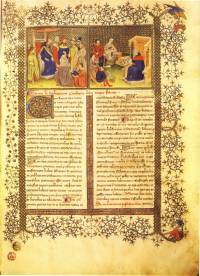
Source: Vitruvius, De architectura in ms. Florence, Biblioteca Medicea Laurenziana, Plut. 30.10, fol. 1r., 15th century
The Vitruvian Virtues or the Vitruvian Triad. The origins of functionally optimised product design can be traced all the way back to classical antiquity. The writings of the Roman artist, architect, and engineer Vitruvius are among the oldest surviving architectural documents. His comprehensive “De architectura libri decem“ (Ten Books on Architecture) comprised the first handbook of planning and design. In his texts he describes that an architect has to be interested in art and science, as well as being versed in rhetoric and having a good knowledge of history and philosophy. In chapter three of his first book he names a guiding principle: A structure must exhibit the three qualities of firmitas, utilitas, venustas – that is, it must be solid, useful, beautiful.

